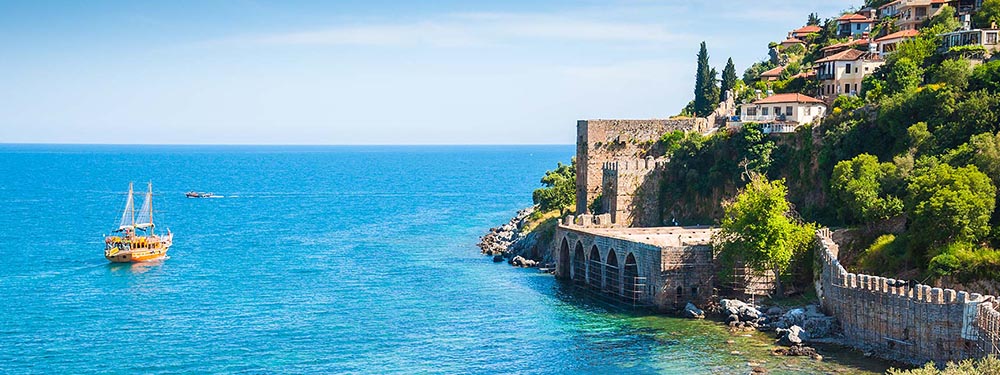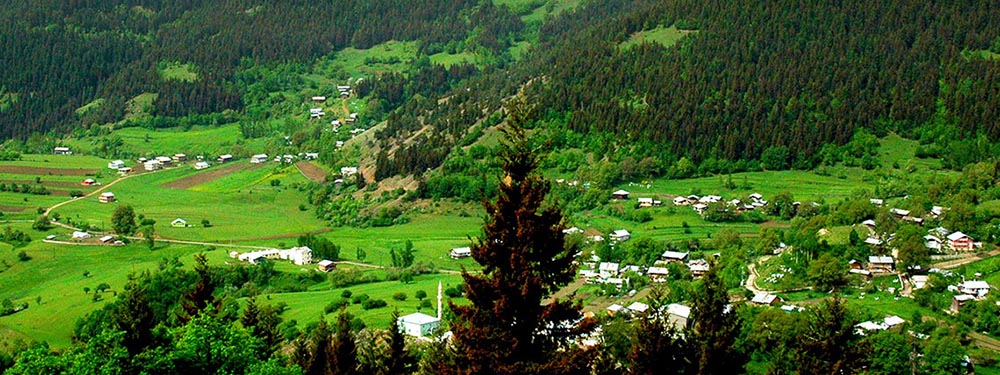The library of Celsus; was built for Tiberius Julius Celsus Polemaeanus and completed in AD 135 in Ephesus, Asia Minor (Anatolia) (now Turkey). Celsus’ son, Gaius Julius Aquila (consul AD 110), built the library in honor of his father who was consul in AD 92, former governor of Asia in AD 115, and a wealthy and popular local citizen. The library was built to store 12,000 scrolls and to serve as a monumental tomb for Celsus. It was unusual to be buried within a library or even within city limits, so this was a special honor for Celsus.
Though the building itself does not have much historical significance, it is important today because it is one of the few remaining examples of an ancient Roman influenced library. It also shows how public libraries were not only built in Rome itself, but also all throughout the empire. After a massive restoration project, which is considered to be very true to the historical building, the front façade of the building was rebuilt and now serves as a prime example of Roman architecture on public buildings.
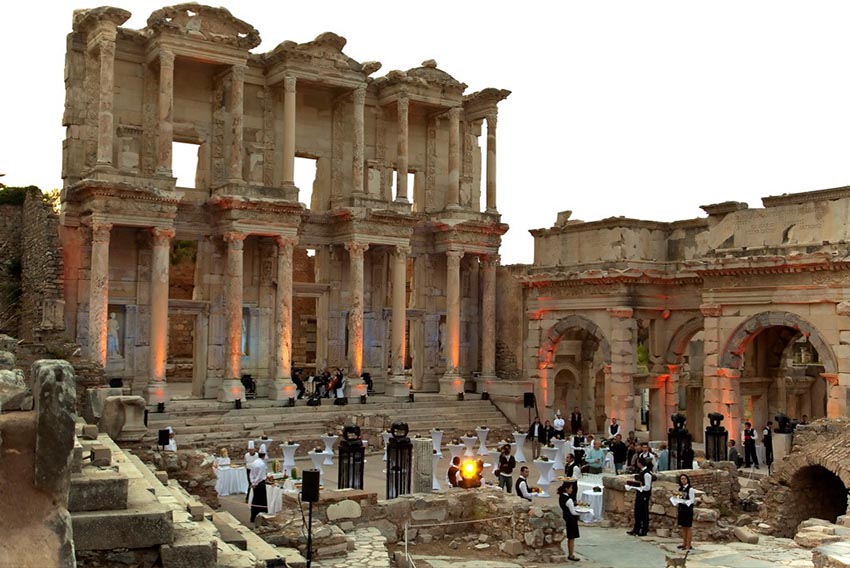
Coctail at Celcus Library
In the year of 10 BC, Androclos, the son of King of Athens-Kodros, was searching a location for establishing a site. Androclos belonged to Akhas, was running from the Dor invasion in Greece. He was leading one of the migration convoys. It was predicted by an Apollon oracle that a fish and a boar would show the location of the new settlement. Days later, parallel to the oracle’s prediction, while frying, a fish fell down from the pan, irritating a hiding boar behind the bushes. The feared boar escaped immediately. Androclos followed the boar and established the city of Ephesus, where he had killed the boar. When Androclos died in the wars with Carians, a mausoleum was built to the memory of the first king of Ephesus. The mausoleum is considered to be placed around "The Gate of Magnesia".
Ephesus was ruled by the Lydian king, Kreisos, in the mid 6BC. The city reached the "Golden Age" and became a good model to the Antic World in culture and art, as well. As the detailed excavations have not completed yet, apart from the Artemis the remains of that age haven’t been revealed.
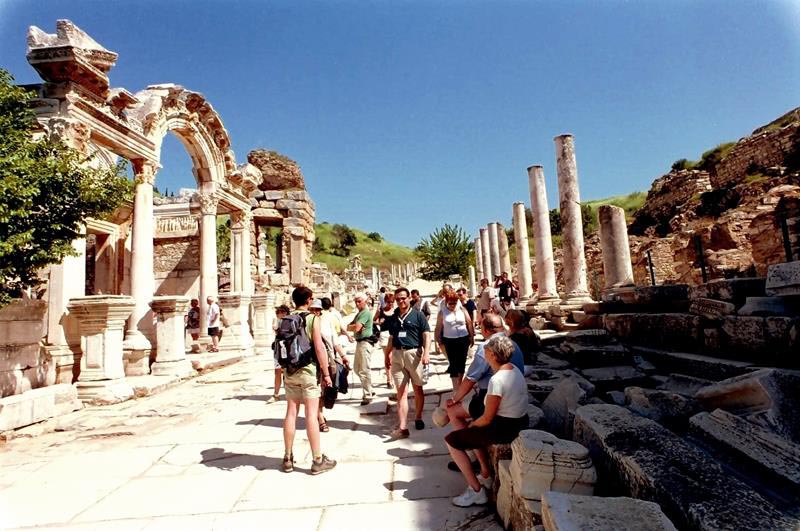
A Tour at the ancient city of Ephesus
Ephesus terrace houses are located on the hill, opposite the Hadrian Temple. Also called as "the houses of rich", important for the reason give us information about family life during the Roman period. They were built according to the Hippodamian plan of the city in which roads transected each other at right angels. There are six residential units on three terraces at the lower end of the slope of the Bulbul Mountain. The oldest building dates back into the 1C BC and continued in use as residence until the 7C AD. They are covered with protective roofing which resembles Roman houses. The mosaics on the floor and the frescos have been consolidated and two houses have been opened to the public as a museum.
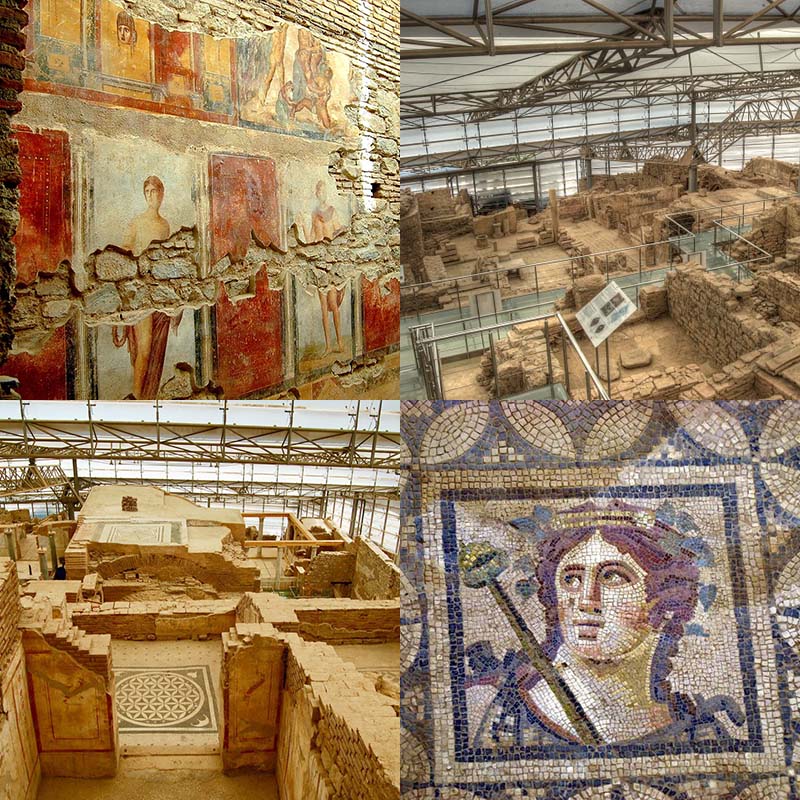
Ephesus Terrace Houses
They had interior courtyards (peristyle) in the center, with the ceiling open. They were mostly two-storied, upper stores have collapsed during time. On the ground floor there were living and dining rooms opening to the hall, and upstairs there were bedrooms and guest rooms. The heating system of the terrace houses were the same as that in baths. Clay pipes beneath the floors and behind the walls carried hot air through the houses. The houses also had cold and hot water. The rooms had no window, only illuminated with light coming from the open hall, so that most of the rooms were dim. The excavations of the terrace houses started in 1960. The restoration of the two of the houses have been finished and can be visited today.



